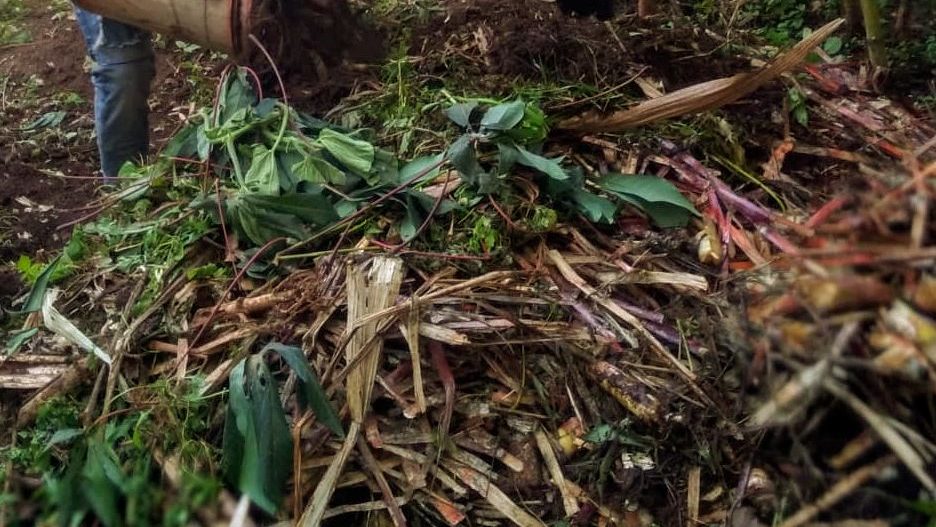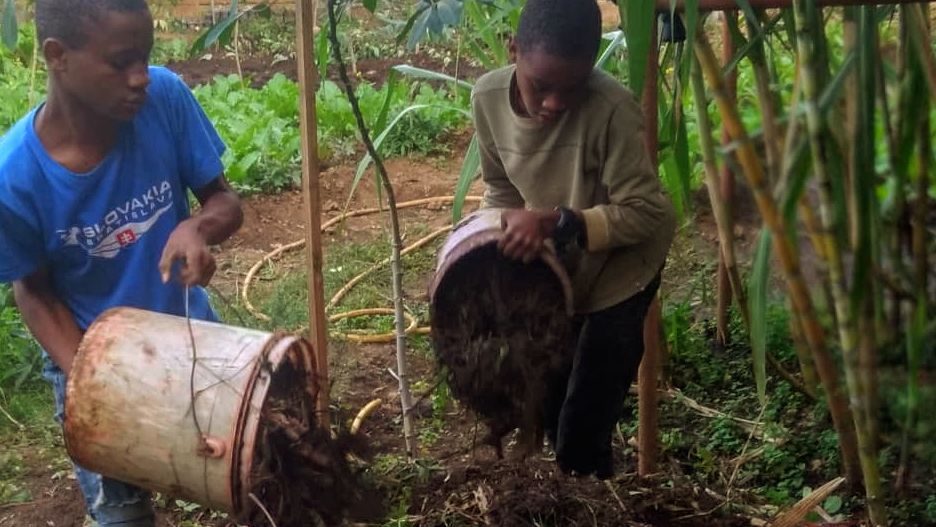



SUSTAINABLE AGRICULTURE:
We promoting practices that ensure long-term food security while protecting natural resources.
Sustainable agriculture is a core focus of our efforts to address global environmental challenges and ensure food security. Our sustainable agriculture initiatives aim to promote practices that not only enhance productivity but also protect and restore natural resources.
Here’s how we aim to achieve this:
Sustainable Practices
Crop Rotation and Diversification: Involves growing different types of crops in the same area across different seasons. This practice helps improve soil fertility and reduce the risk of pests and diseases. Diversifying crops also enhances biodiversity and provides a variety of nutrients, contributing to healthier soils and ecosystems.
Organic Farming: We advocate for organic farming methods to home gardens that avoid synthetic fertilizers and pesticides. Organic farming relies on natural inputs like compost and manure, which improve soil health and reduce pollution. By promoting organic farming, we aim to produce food that is healthier for both consumers and the environment.
Agroforestry: Agroforestry integrates trees and shrubs into agricultural landscapes. This practice enhances biodiversity, improves soil structure, and provides additional sources of income through products like fruits, nuts, and timber. Trees also play a crucial role in sequestering carbon and mitigating climate change.
Here are some examples of agroforestry practices:
- Alley Cropping: This involves planting rows of trees or shrubs between rows of crops. The trees provide shade, reduce soil erosion, and enhance biodiversity. Crops like maize or beans can grow between rows of trees such as nitrogen-fixing species like Leucaena or fruit trees.
- Silvopasture: This integrates trees with livestock grazing. Trees provide shade and shelter for animals, improve pasture quality, and can offer products like timber or fruit. Common trees used include acacia species, while livestock such as cattle, goat or sheep graze underneath.
- Windbreaks: Rows of trees are planted to protect crops from wind damage, improve microclimates, and reduce water loss. Species like Gravelia or Markamia are often used, which also provide additional resources such as wood, mulching or fodder.
- Forest Farming: This involves growing shade-tolerant crops under the canopy of existing forests or manage the tree canopy and use vertical space for specific crops. Examples Forest gardens include cultivating maize-beans intercropping plot, medicinal plants, shade-grown coffee beneath native or planted tree species.
- Riparian Buffers: Trees and shrubs are planted along streams or rivers to prevent erosion, protect water quality, and create wildlife habitats. Native species like ficus are commonly used, and these buffers improve the sustainability of nearby agricultural activities by protecting the water source.
- Taungya System: Farmers grow agricultural crops during the early stages of forest plantations. Once the trees start to grow, the agricultural crops are reduced. This system allows the farmer to gain income while trees mature.
- These examples show how agroforestry practices balance environmental sustainability with economic benefits for farmers.
Water Conservation Techniques: Efficient water use is critical in sustainable agriculture. We promote techniques such as drip irrigation, rainwater harvesting, and mulching to conserve water and reduce the impact of drought. These methods help maintain soil moisture and improve crop yields, especially in arid and semi-arid regions.
Integrated Pest Management (IPM): IPM combines biological, cultural, mechanical, and chemical practices to manage pests in an environmentally friendly way to ensure food security. By using natural predators, crop rotation, and selective pesticides, we minimize the reliance on harmful chemicals and reduce the impact on non-target species and ecosystems.
Soil Health Management: Healthy soil is the foundation of sustainable agriculture. We focus on practices that enhance soil organic matter, such as cover cropping, reduced tillage, and composting. These practices improve soil structure, increase water retention, and boost nutrient availability, leading to more resilient and productive agricultural systems.
Community Engagement and Education
Farmer Training Programs:
We aim to conduct training sessions for farmers to educate them on sustainable agricultural practices. These programs include hands-on demonstrations, field visits, and workshops covering topics such as soil health, water conservation, pest management, and organic farming. By equipping farmers with the both local and scientific knowledge and skills, we empower them to adopt and implement sustainable methods.
Support for Smallholder Farmers:
Smallholder farmers are the backbone of agriculture in many regions of Tanzania. We aim to provide technical assistance, access to resources, and market linkages to support smallholder farmers in transitioning to sustainable practices. Our initiatives help improve their livelihoods and build more resilient farming communities.
Collaborative Research and Innovation:
We collaborate with research institutions, universities, and agricultural experts to develop and promote innovative solutions for sustainable agriculture. By staying at the forefront of agricultural research, we ensure that our practices are based on the latest scientific knowledge and technologies.
Policy Advocacy:
We advocate for policies that support sustainable agriculture and food security. This includes promoting land use planning, incentivizing sustainable farming practices, and ensuring access to resources and markets for smallholder farmers. Our policy efforts aim to create an enabling environment for sustainable agriculture to thrive.
Success Stories and Impact
Improved Crop Yields and Food Security:
Our sustainable agriculture initiatives have led to increased crop yields and improved food security for many farming communities. By adopting practices like crop rotation and organic farming, farmers have seen higher productivity and better resilience to climate variability.
Environmental Benefits:
Sustainable agriculture practices contribute to environmental conservation by reducing soil erosion, improving water quality, and enhancing biodiversity. Agroforestry, for example, has helped restore degraded lands and create wildlife habitats, while IPM has reduced the use of harmful pesticides.
Economic Empowerment:
Through our support and training programs, farmers have been able to access new markets and increase their incomes. The additional revenue from sustainable practices such as organic farming and agroforestry products has empowered communities economically and socially.
Community Resilience:
By promoting sustainable agriculture, we build the resilience of farming communities to climate change and other challenges. Improved soil health, water conservation, and diversified farming systems help communities withstand environmental shocks and ensure long-term food security.
Get Involved
Join Us in Promoting Sustainable Agriculture:
We invite individuals, organizations, and policymakers to join us in our mission to promote sustainable agriculture. Together, we can ensure a future where food security is achieved in harmony with nature. For more information on how you can get involved, support our initiatives, or learn about our training programs, please visit our Contact Us page or reach out to us directly.
